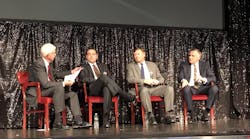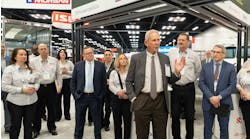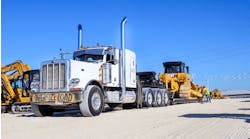LAS VEGAS. The heavy-duty aftermarket sector is projected to grow again in 2018, but the continued globalization of truck manufacturing and the adoption of new technologies are requiring companies to evolve.
In his opening comments at the 2018 Heavy Duty Aftermarket Dialogue, Tim Kraus, president of the Heavy Duty Manufacturers Association, said “globalization has grown every year,” and extends beyond truck manufacturers.
Kraus noted a majority of industry suppliers now have a manufacturing, office, or marketing presence outside the United States.
Stu MacKay, president emeritus of MacKay and Co., said globalization has “disrupted the way things used to be … and now there is even more disruption.”
There continues to be foreign investment in truck makers, with the most recent examples being Volkswagen purchasing a stake in Navistar, and Chinese carmaker Zhejiang Geely Holding Group is buying about 8% of Sweden’s Volvo AB.
The result is that “the rules of the game have changed, and it is changing relationships up and down the supply chain,” he said.
Denny Slagle, president and CEO of Mack Trucks, part of Volvo , said the globalization movement is a positive for his company. It allows companies like Volvo and Mack to “spread technology … across the world,” he said. While there can be subtle differences between markets, it is a “net plus.”
The trucks the company is manufacturing are more complex than ever, and that often means using OEM-approved components. That provides more opportunities for dealers, though it is unlikely that second and third owners of these vehicles are going to buy those same components years from now on the aftermarket.
Jay Craig, president and CEO of Meritor Inc., said his company is “leveraging global products” across markets. He said a new medium-duty axle being used in the United States – and soon will be introduced in Brazil - was developed in India.
Craig also said companies across the world are having to keep pace with the industry’s blistering pace of technological advancements. For example, he said while axles may have had a 20-to-30 year life cycle in the past, that figure has shrunk to 5-to-7 years.
He added purchasing decisions by OEMs are “becoming more refined and centralized,” and reflect global pricing of original and aftermarket components.
Joe McAleese, chairman of Bendix Commercial Vehicle Systems, agreed with Craig, saying that negotiations involving the North American market have been conducted in Europe. Bendix's parent of is Knorr-Bremse, based in Munich, Germany.
As he looks to the future, Craig said Meritor usually includes aftermarket engineers as part of the initial design team. The goal, he said, is to make it more difficult for knock-off component makers to re-engineer the products.
That future is also likely to include a greater reliance on electric vehicles and axles. It is a tricky balance to focus on a possible electrified future, while at the same time Meritor “can’t ignore our existing portfolio” so it does not become dated.
McAleese said Bendix sees fresh aftermarket opportunities as more fleets turn to disc brakes and retrofit older vehicles with active safety systems.
The complexity of new components such as sensors is among the biggest concerns for fleets, said John Blodgett, vice president of sales and marketing for MacKay and Co.
That could lean to greater outsourcing of maintenance by fleets, especially if providers can show they can cut reduce downtime by learning how to leverage remote diagnostics and big data.
This could offset a potential drop in service opportunities as safety technologies and over-the-road software updates reduce the number of times vehicles need service, he noted.
Blodgett and Ken Griswold, MacKay’s director of market strategy, projected total aftermarket sales in the United States to be $30.8 billion this year, up about 1.3% from 2017. They also projected about 1% uptick in prices.
In the United States, original equipment makers are seeing sales grow at higher clip than independent outlets, a trend that is reversed in Canada.
They also said parts sales among dealers grew in 2017 after struggling during 2016.
There has also been an increase in aftermarket sales of Classes 3-5 vehicles, which Blodgett attributed to smaller vehicles being used to fulfill surging e-commerce orders.





